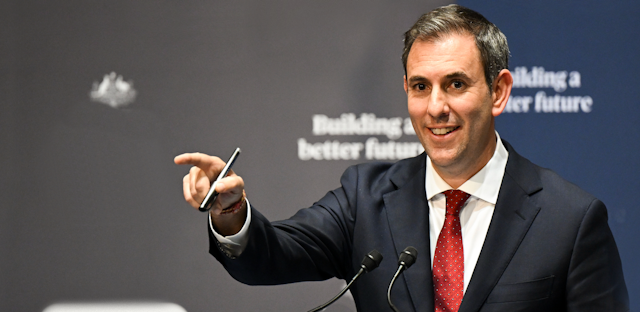In an implicit admission that the Commonwealth budget may not measure what really matters, Treasurer Jim Chalmers is about to release what he is calling “Measuring What Matters” – Australia’s first national wellbeing framework.
The statement was to have been released as part of this year’s May budget, and an earlier hurriedly-prepared attempt was included in Chalmers’ 2022 budget.
Chalmers’ description of it as Australia’s “first” national wellbeing framework is an acknowledgement that first wellbeing statement didn’t amount to a framework. Chalmers says he is “up for the necessary conversations” needed to improve the framework further.
The one he is about to release has benefited from more than 280 submissions and the time needed to distil everything that matters for wellbeing into five broad themes, made up of about 50 indicators the treasury will track through time.
Chalmers says the themes are the extent to which Australia is
healthy
secure
sustainable
cohesive
prosperous.
In what turned out to be a parallel process, we have been developing what we call an “integrated science of wellbeing” and have just published a book with 21 contributions on the subject through Oxford University Press.
One of us has a background in psychology, one in medicine, and two in social sciences, ecology, and economics.
Among the 45 authors who have contributed chapters are specialists in a range of topics, including ageing, architecture, biodiversity, compassion, governance, Indigenous studies, population, psychology, sustainability, and trauma.
Everything is connected
All of the authors were asked to relate their work to other aspects of wellbeing, so that each chapter considered interconnections.
Behind this was an understanding that things depend on each other – meaning that giving a score to one element of wellbeing, without examining how it impacts on other elements of wellbeing, can give us the wrong idea about how to make things better.

As an example, anger is generally regarded as deleterious to wellbeing and worth minimising. But if minimising anger meant less action on climate change, minimising it might make us worse off.
And some of the things that are incredibly important for wellbeing are hard to measure, including what happens within relationships or access to sunlight.
Related to these are the design of cities and their integration with hospital and health services. These matter for the quality of dying, as well as living.
Lying behind much of what matters is inequality – which can be worsened by a misplaced focus on GDP growth at all costs – and the natural environment, most of which is missing from standard measures of GDP.
Global work on wellbeing
At the government level, wellbeing is being espoused by the Wellbeing Economy Governments (which so far includes Scotland, New Zealand, Iceland, Wales, Finland, and Canada).
It’s also being coordinated across the hundreds of groups working on this issue by the Wellbeing Economy Alliance, funded by philanthropic foundations.
While their objectives are still being refined, they (and Chalmers’ objectives) don’t differ much from the five goals identified more than 30 years ago by pioneers in the field of ecological economics:
to stay within planetary biophysical boundaries
to meet all fundamental human needs
to create and maintain a fair distribution of resources, income, and wealth
to bring about an efficient allocation of resources that allows human development and flourishing
to create governance systems that are transparent, fair, responsive, just and accountable.
We are about to find out how well Chalmers and his department have integrated these objectives, and how well they think Australia is doing.
Read more: Australia's wellbeing budget: what we can – and can't – learn from NZ

